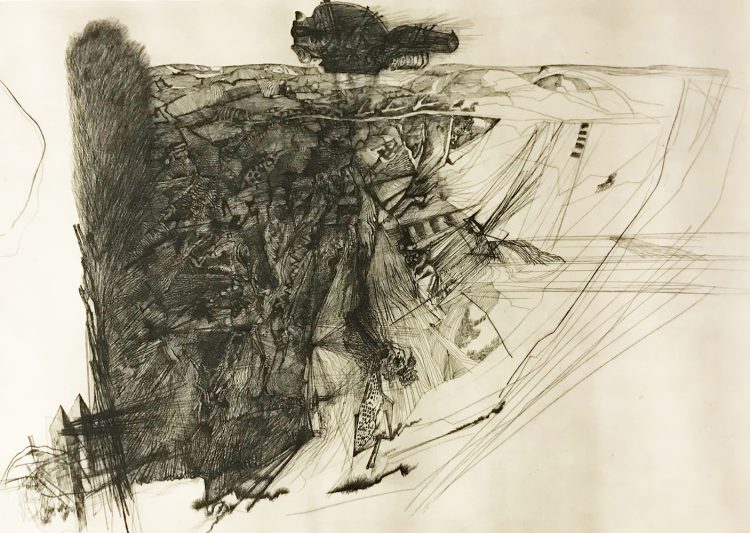
About this Work
About the Artist
Italian
b. 1924 Cervignano del Friuli (UD), Italy
d. 2015 Palmanova (UD), ItalyAn Italian neorealist painter, printmaker, and author from Friuli-Venezia Giulia, Giuseppe Zigaina showed a very early propensity for drawing and held his first exhibition at the age of 19. In 1946 he met Pier Paolo Pasolini, with whom he established a deep friendship and solid artistic relationship, collaborating on several poems and films. In 1949 Zigaina exhibited in Rome at the Gallery of Modern Art, and that same year, created thirteen designs for a collection of poems of Pasolini, entitled Dov’è la mia patria (Where is my Fatherland). After winning the Fontanesi Prize at the Venice Biennale in 1950, Zigaina’s works became gradually influenced by the German New Objectivity movement. Around 1965 he began to adopt the technique of engraving. In 1984 Zigaina spent time in San Francisco teaching at the San Francisco Art Institute and at UC Berkeley.He was awarded many prizes for his work including the Ginori prize at the Venice Biennale in 1960, special prize at the Biennale internazionale della grafica di Firenze (1974), special jury prize at the Biennale internazionale della grafica di Mulhouse (1980), Masi prize for culture (1990) and the Terni award for culture in 1998.
b. 1924 Cervignano del Friuli (UD), Italy
d. 2015 Palmanova (UD), ItalyAn Italian neorealist painter, printmaker, and author from Friuli-Venezia Giulia, Giuseppe Zigaina showed a very early propensity for drawing and held his first exhibition at the age of 19. In 1946 he met Pier Paolo Pasolini, with whom he established a deep friendship and solid artistic relationship, collaborating on several poems and films. In 1949 Zigaina exhibited in Rome at the Gallery of Modern Art, and that same year, created thirteen designs for a collection of poems of Pasolini, entitled Dov’è la mia patria (Where is my Fatherland). After winning the Fontanesi Prize at the Venice Biennale in 1950, Zigaina’s works became gradually influenced by the German New Objectivity movement. Around 1965 he began to adopt the technique of engraving. In 1984 Zigaina spent time in San Francisco teaching at the San Francisco Art Institute and at UC Berkeley.He was awarded many prizes for his work including the Ginori prize at the Venice Biennale in 1960, special prize at the Biennale internazionale della grafica di Firenze (1974), special jury prize at the Biennale internazionale della grafica di Mulhouse (1980), Masi prize for culture (1990) and the Terni award for culture in 1998.
